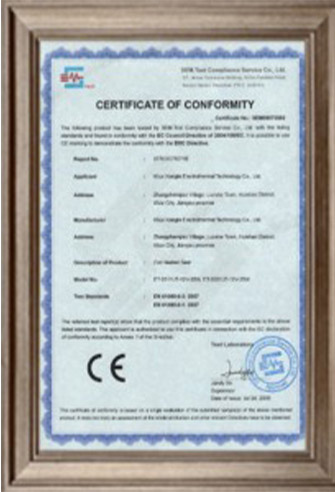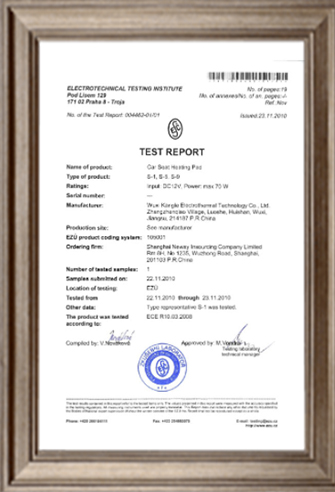Can I open the brake oil can cover?
The brake oil pot cover can be opened, but before opening, it is necessary to thoroughly clean the debris around the brake oil pot to avoid debris falling into the brake oil, resulting in the need to replace the new brake oil. When purchasing brake fluid, it is recommended to choose a reliable manufacturer, the higher the level, the better, because the brake working pressure is generally 2MPa, and the high-level brake fluid can reach 4 to 5MPa.
There are three types of brake fluid, and different types of brake fluid are suitable for different braking systems. During use, care must be taken not to mix different types of brake fluid to avoid affecting the braking effect.
It is important to note that in braking systems, all liquids are incompressible. Therefore, in a sealed container or a liquid-filled pipeline, when the liquid is under pressure, the pressure will be quickly and evenly transmitted to all parts of the liquid, which is the principle of hydraulic braking. If the brake oil pot cover is opened and debris is found in the brake oil, new brake oil must be replaced in time to ensure the normal operation of the brake system.
To what extent is the brake can cap screwed properly?
The lid of the automobile brake oil pot should be screwed to a moderately tight degree, neither tight nor loose, to avoid aging or even cracking of the lid.
The brake can cap is designed to allow for moderate rotation to ensure proper function of the cap while avoiding unnecessary damage. Too tight tightening force may lead to aging or even cracking of the pot lid, because the device of the threaded sealing structure should not exceed the force of the tightening torque to screw the thread, so as not to cause thread wear or structural damage, thus affecting the sealing effect and the normal use of the user. In addition, too tight tightening may also damage components on the lid, such as the brake oil level sensor, which may become stuck, causing the lid to fail to rotate properly.
Therefore, the correct way is to gently tighten the brake oil pot cover to ensure that it is neither leaking nor too tight, so as to protect the lid and the brake oil in it from damage. This can ensure the normal operation of the brake system, while extending the service life of the brake oil can cover .
Where does the water in the brake fluid come from?
Many friends know that brake oil needs to be replaced regularly, because it has a strong water absorption. With the increase of water content, the boiling point of brake oil will be greatly reduced, and it is easy to boil and gasification after multiple braking, which threatens driving safety.
01 Where does the water in the brake oil come from?
In fact, these moisture is from the brake oil storage tank lid into the brake oil! Seeing this, you must have a question: Isn't this lid meant to seal? Yes, but not all of it! Let's take off this lid and see!
02 Lid secrets
The lid of the brake oil storage tank is generally made of plastic material. Turning over the lid, you can see that the rubber pad is installed inside, and the rubber deformation can play a sealing role to separate the brake oil from the outside air.
But if you press down on the middle of the rubber pad, a crack will appear as the rubber deforms. The edge of the crack is regular, indicating that this is not caused by aging and cracking of rubber, but is pre-processed.
Continue to remove the rubber pad, you can see that there is a groove on the lid, and the screw thread corresponding to the groove position is also disconnected, and the neat incision indicates that this is also deliberately processed.
The cracks in the rubber pad and the grooves in the lid actually form an "air channel" through which outside air can enter the brake fluid reservoir.
03 Why is it designed this way?
It is necessary to analyze the working process of the vehicle brake system.
When the brake pedal is pressed down, the brake master pump will press the brake oil into the brake subpump of each wheel to generate braking force. At this time, the brake oil level in the liquid storage tank will also drop slightly, and a certain negative pressure will be generated in the tank, which will hinder the flow of brake oil, thereby reducing the braking effect.
Release the brake pedal, the brake pump returns, and the brake oil returns to the liquid storage tank. If the air in the tank can not be discharged, it will hinder the return of the oil, so that the brake caliper can not be completely released, resulting in "drag brake".
To avoid these problems, engineers have designed such a set of "ventilation devices" on the lid of the brake oil reservoir to balance the pressure difference between the inside and outside of the reservoir.
04 The ingenuity of this design
Due to the use of elastic rubber as a "valve", this "vent" will only be opened when there is a certain pressure difference between the inside and outside of the liquid storage tank. When the brake ends, the "vent hole" will automatically close under the action of rubber elasticity, and the contact between the brake oil and the air will be isolated to the greatest extent.
However, this will inevitably leave a "chance" for the water in the air, making the water content of the brake oil increase with the extension of the use of time. Therefore, the owner friends must remember to replace the brake oil regularly! We recommend that you change the brake oil every 2 years or 40,000 kilometers, and if the climate is humid in the region, you should further shorten the brake oil change interval.
If you want to know more, keep reading the other articles on this site!
Please call us if you need such products.
Zhuo Meng Shanghai Auto Co., Ltd. is committed to selling MG&MAUXS auto parts welcome to buy.















